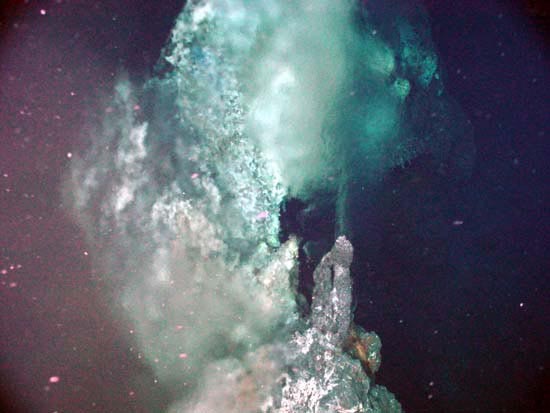In a breakthrough discovery, scientists have determined the single source where life on Earth descended from, which is apparently a microbe that existed some 4 billion years ago. In order to survive, this microbe adapted into warm, mineral rich environments that are devoid of oxygen, similar to modern day natural hot springs. These primitive life forms were feeding off carbon dioxide, hydrogen and nitrogen gases that circulate around their damp, warm habitats.
In this new study by scientists from the University of Düsseldorf, these microbes are considered as our "ancestors" which are also the last common ancestor of all living things on Earth today. To determine this last, universal common ancestor, researchers combed through 6.1 million genes within single celled organisms.
Scientists discovered that there are 355 protein groups that still remain that are derived from our ancestor microbe where the archaea and bacteria split and evolved separately 4 billion years ago. Scientists were also able to study the genetic structure of this primitive microbe, providing crucial clues about its habitat, revealing their genomes that have adapted to their environment.
This primordial microbe is known as Luca where this single celled bacterium is now hailed as the Last Universal Common Ancestor. Researchers estimate that these microbes were abundant on Earth when the planet was around 560 million years old. These new findings can also challenge past studies about how life began on Earth, where some scientists believe that deep sea vents, volcano ranges and other similar events led to extreme environments that were conducive to life.
These 355 genes also provide a window to early Earth's environments that can be found in deep sea vents, in which these intensely hot plumes are gassy and rich in metallic properties, which are caused when seawater interacted with magma erupting and escaping from crevices of the ocean floor.
According to lead author of the study, William Martin from the Heinrich Heine University in Germany, this microbe found its food source from hydrogen seeping off from hydrothermal vents, as it was the only source of hydrogen gas during that period on the planet.
This was also a time when the solar system was going through a lot of violent, cosmic activity, as the sun and other planetary objects collide and crash with asteroids and protoplanets.
This new study is published in the journal Nature Microbiology.



























